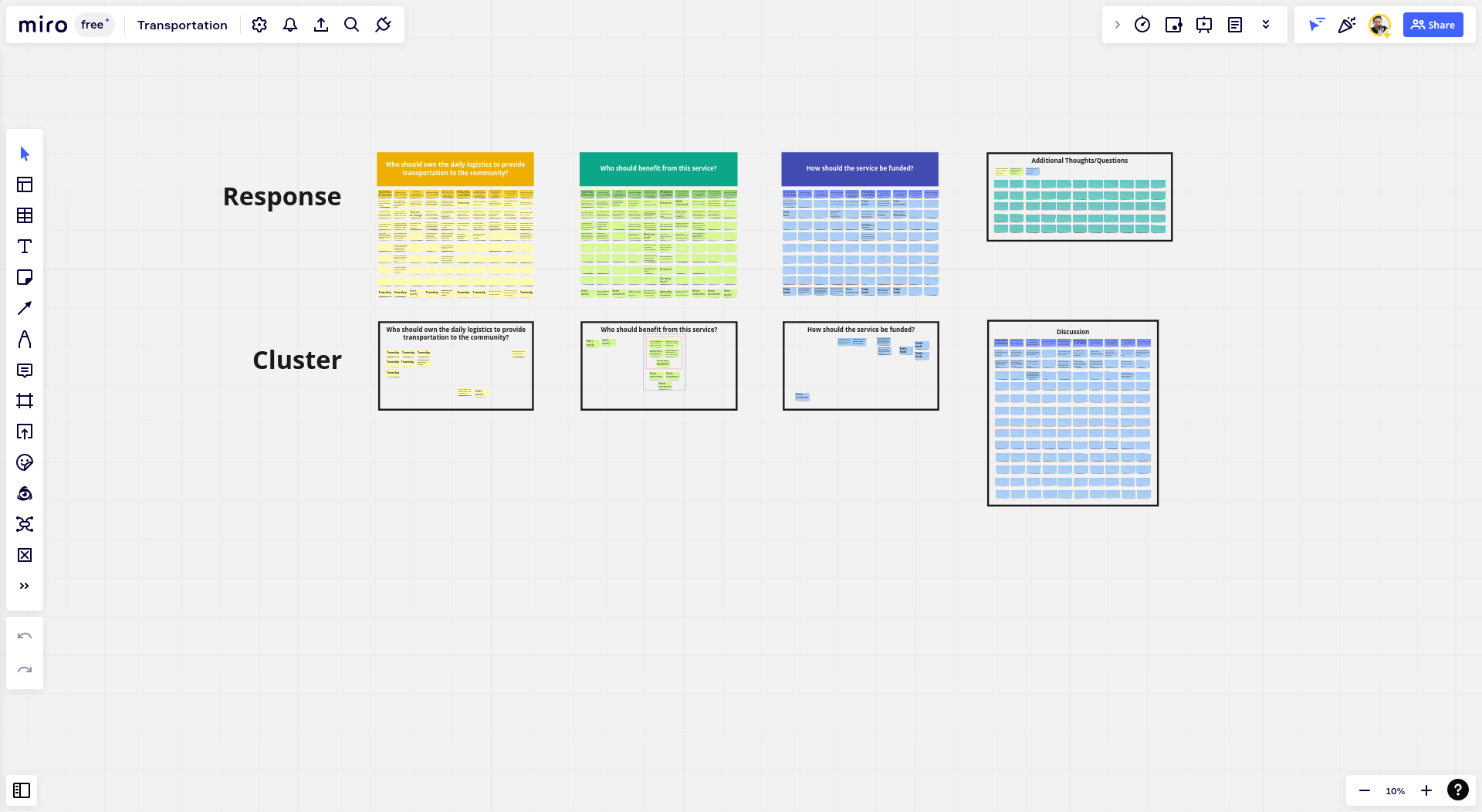Case StudiesTransportation Mediation - Oak Park
Mediating discussion for the Parks of Oak Park residents

Overview
Client
The Park District of Oak Park (PDOP), created in 1912, serves the recreational needs of the 52,000 residents of Oak Park, providing nearly 3,000 recreation programs and special events annually. Overseen by a Board of five elected officials, the District owns an Administrative Center, two outdoor pools, an indoor year-round ice rink, the Oak Park Conservatory, Cheney Mansion, Pleasant Home, a gymnastics & recreation center, seven recreation centers plus 18 parks totaling 84 acres of parkland. Through the programs and facilities the Park District of Oak Park provides, they significantly contribute to the quality of life in Oak Park.
The Challenge
Level-set on the problems to solve
Approach
Discovery calls with stakeholders, preparing meeting format and Miro board to capture ideas and notes
Project Month/Year:
August 2022
Problem Statement
Currently, the City of Oak Park doesn’t have a formal service to transport its students from school to their homes. There isn’t an agreement amongst 10 of its stakeholders (which include public/private entities, and not-for-profits) on the problem. This has a huge impact to Oak Park’s low income residents who may not have access to transportation during this time. This has been a longstanding issue for the city, and the stakeholders part of the organization committee who organized it requested a neutral mediator to facilitate this discussion.
Our Approach
Initial discovery calls, meeting prep amongst the facilitators, and synthesizing results through a Miro board.
Methodology
Meeting Format
In the initial ask, the team gathered as much insight as possible to have a full understanding of what the problem was. Using this information, they crafted a flexible format which focused on resolving the questions of: (1) Who should own the daily logistics to provide transportation to the community?, (2) Who should benefit from this service?, and (3) How should the service be funded?.
With a short meeting window (an hour and a half), and about 11 people (outside of the mediators) on the call, the team determined that a round-robin format where participants can take turns speaking would be the best fit.
Facilitation & Synthesis
During the meeting, 1 member of the team moderated discussion and the other took notes on Miro. Note taking made it easier for the moderator to look at the synthesized results live and call out the similarities and differences between each of the stakeholder’s perspectives.

While one facilitator moderated discussion, the other one took notes to speed up synthesis during and after the call.
Outcome
Ultimately, the group decided that they may need to pay for a research service to gather more insight onto the problem. The meeting helped reveal that while each organization had their assumptions of what they thought the problem to be, and what potential solutions looked like, it was clear in their consensus that they need to do a deeper dive into the problem by asking its residents. Code for Chicago provided the group documentation on what was discussed.